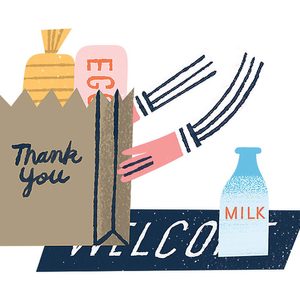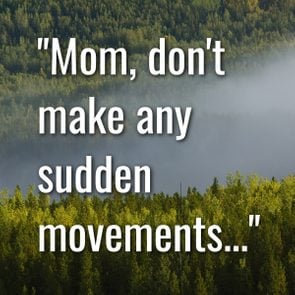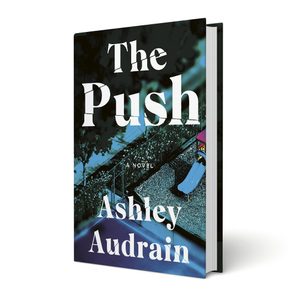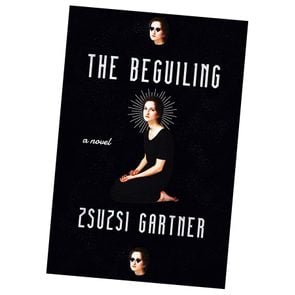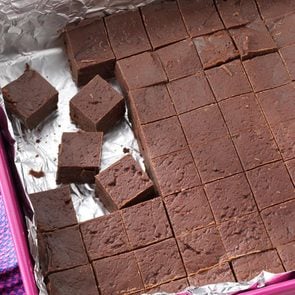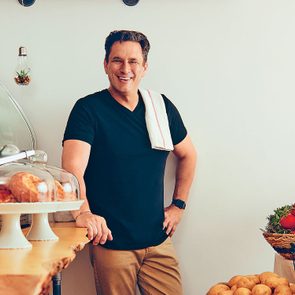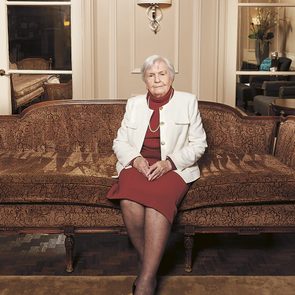Daru Smith was talking to his doctor and sister one day in December 2018 when he began to die. He saw their forms grow dim, a dark curtain coming down on them and himself in his fluorescent-lit hospital room at University of Chicago Medicine. Then the 29-year-old was above it all, looking into a hole in the ground where a torrent of water was swirling like a giant draining sink.
And then he was in a hallway. At the end of it glowed a white light. He felt at peace. No more heart palpitations, no flutters, no aches. He saw pictures on a wall. Scenes from his life. His son being born. It felt good, the light. Until Daru realized: This is what happens when you die. He turned around and began to run. The light pulled him. I gotta fight, he said to himself.
Daru had been sick. A few weeks earlier, he’d gone to the emergency room with a cold he couldn’t shake. But tests showed it was much more than that. Daru was in cardiogenic shock, a condition in which the heart can’t pump enough blood to meet the body’s needs. He also had something called sarcoidosis, a rare autoimmune disease that can cause the body to overproduce certain cells that all but shut down organs—in Daru’s case, the heart, liver and kidneys.
That meant Daru needed all three vital organs replaced, a procedure so complex and risky that only 15 had been performed in the United States by that point. He would need the rarest of donors, one with three healthy organs compatible with Daru’s blood type and strong enough to support his nearly two-metre-tall body.
Daru fought the light long enough that his eyes fluttered and opened. “Hey, where’d you go?” said Daru’s cardiologist, Bryan Smith. “Thought we lost you for a second.”
Sarah McPharlin sat in a spare room at UChicago Medicine, waiting to plead for her life. She was there to meet with the centre’s transplant evaluation team.
As different as Sarah was from Daru—she’d grown up in a tree-lined suburb of Detroit, gone to graduate school, travelled the world; he was raised by a mother who managed a Harold’s Chicken Shack in Chicago, where he worked until he found a better-paying job as a truck driver—they were, in more important ways, alike.
Like Daru, Sarah was 29. A rare autoimmune disease—an inflammatory condition called giant cell myocarditis—had attacked her heart. At 12, Sarah had had a heart transplant, but over the years the replacement organ also began to fail. Surgeons had to open her chest five more times to repair ongoing problems. Complications from years of procedures and medications had all but destroyed her liver and kidneys. Her only hope, too, lay in a triple transplant.
But there were some ugly realities that needed to be addressed: The degree of difficulty of a heart transplant doubles with each previous cardiac operation. Sarah’s numerous procedures had left her heart buried in scar tissue. This “hostile” chest, as surgeons call it, makes it harder for them to locate the arteries and veins they will need to disconnect and reattach. What’s more, she was so physically weak that doctors weren’t sure she could survive such a gruelling surgery.
And then there’s the macabre math that goes into such decisions. A triple transplant means using three organs that could potentially save three other patients. Does it make sense to use them on a single long shot?
Dr. Nir Uriel, a heart specialist, was at first skeptical about Sarah’s case. She was as pale as the hospital sheets. She had almost no muscle mass. Her chest seemed to have collapsed in on itself, while fluid swelled her arms and abdomen. She could barely speak a sentence without gasping for breath. But when Uriel asked what she planned to do post-transplant, the words she could get out moved him.
She’d travel, she said, maybe to Europe, where she had visited as a student in high school. She’d restart her career as an occupational therapist. Beyond that? She loved spending time with her family. They were inseparable.
Before the day was out, Sarah had spoken with nearly 30 members of the transplant evaluation team. Afterward, they unanimously voted to move forward, each one seeing what Uriel had seen: someone who, though facing death, radiated life.
For both Sarah McPharlin and Daru Smith, it was now a waiting game. Waiting for organs to become available. Waiting, to put it in blunt terms, for the right person to die.
But at their darkest point, a bright spot flickered: The two patients, just two doors apart in the ICU, met. Over the following weeks, a bond developed. Sarah and Daru compared notes as they walked laps around the floor together, challenging each other on how many trips they could make, laughing at what they must look like in their gowns, with tubes and machines trailing behind. Their go-to phrase became “You got this.”
At 3:15 p.m. on Tuesday, December 18, 2018, Jamie Bucio, lead coordinator of UChicago Medicine’s organ procurement team, felt her pager buzz with an alert. A potential match for Daru had been declared brain-dead. The young man’s heart, liver and kidneys were intact and strong, and his family had agreed to donate the organs. Bucio and her five-person team had one hour to respond with a preliminary acceptance of the organs—otherwise they would go to the next patient on the waiting list.
Every moment of that hour was crucial. First, Bucio collected information on the organs: What kind of shape were they in? Were they good matches? Then she and her team alerted the surgeons and the attending physician, sending them medical records of the intended recipient.
Bucio called the attending physician: “Tell Daru it’s time.”
“You ready?” Dr. Smith asked Daru as he walked into his room.
“For what?”
“Are you ready?” he repeated, smiling.
Now Daru smiled, too, the realization dawning on him.
On most days, the white-tiled hallway just outside of operating room five west is deserted, save for the occasional flock of surgeons, nurses and orderlies. But on this day, December 19, just before 3 p.m.—24 hours after Jamie Bucio got the call—an unusually large contingent of 20 medical staff members milled about. The star of the show was the hospital’s head cardiac surgeon, Dr. Valluvan Jeevanandam. He’d be performing Daru’s heart transplant, the initial procedure upon which the other surgeries rested. As Jeevanandam and his team began prepping for the first leg of the marathon surgery, two floors below, Daru was being wheeled away from his ICU room and his family.
Meanwhile, three SUVs carrying the two surgical teams—one for the heart and one for the liver and kidney—raced across the city to retrieve the donor organs. Speed is of the essence. A heart needs to be implanted within six hours—ideally four—of being removed from a donor.
Jeevanandam made his first cut at 3:07 p.m., timing it to when the doctor at the other hospital began removing the donor’s heart. Inserting the rib spreader, a stainless steel retractor used to lay bare the chest cavity, he began to crank slowly. Daru was then hooked up to a heart-lung bypass machine, the major arteries to his heart clamped shut, leaving him without a functioning heart for what would be 102 minutes. Then the removal process began. The donor organ, packed in a Tupperware pickle jar, bathed in a preservation solution, and chilled in a medical box similar to an Igloo cooler, arrived at 5:04 p.m.

Daru’s sarcoidosis presented a complication for Jeevanandam. A healthy person’s tissue is like supple leather, which helps it fuse when sewn together. Much of Daru’s tissue was more like cardboard, so the doctor had to be extra careful not to rip it while sewing the new heart in place.
That accomplished, Daru was ready to be taken off the bypass machine. In transplant surgery, it’s always a tense moment when the aortic clamp is removed. To preserve a heart for transport, doctors fill it with a solution high in potassium. If all goes well, when the clamp is released, the whoosh of blood into the heart restores normal levels of potassium and other electrolytes, and the heart begins to beat.
But Daru’s heart didn’t beat. Not panicking, Jeevanandam picked up forceps and gently massaged the heart, trying to “tickle” it back to life. Finally, a dot began to hop up from the long, flat green line on the screen across the room. With that, Jeevanandam stepped back. Four hours after beginning the surgery, his part was done. It was 7:00 p.m.
While Jeevanandam’s assistants affixed drainage tubes and packed the area around the heart with gauze to absorb blood, Dr. Talia Baker, the surgeon performing the liver transplant, and her team were setting up.
There are some 180 steps in performing a liver transplant. But Baker’s main challenge with Daru was the state of his liver. A healthy liver has the spongy consistency of a jellyfish, which makes it pliable. A cirrhotic, or scarred, liver like Daru’s is firm, so manipulating it is more difficult, raising the risk of damaging the tissue around the organ while removing it.
With liver transplants, there’s also a fear that the absence of oxygen and nutrient-rich blood can damage the newly transplanted organ once blood flow is restored. That damage can cause the heart and lungs to collapse, resulting in death. In Daru’s case, though, the new liver handled the blood flow as it was supposed to.
At 11:46 p.m.—eight hours and 39 minutes after surgery began—the second portion of his transplant was complete. All that remained: the kidney.
Around that time, Bucio got a page that stunned her: A young woman in another state had been declared brain-dead. She was a potential match for Sarah, and she had three healthy organs. Bucio called Dr. Smith, Sarah’s attending physician: “Well, I guess nobody’s getting any sleep for the next 48 hours.”
No hospital had ever performed two triple transplants within a year, and yet UChicago Medicine was preparing to begin its second in just over a day. Was it even possible? It had to be. The offer of three matching organs simply could not be turned down. Bucio had already started assessing the logistics. Because Sarah’s organs were coming from some distance, UChicago Medicine would need two jets, plus ground transportation to and from both airports.
At 8:18 a.m. on December 20, Daru’s triple transplant was completed. After more than 17 hours in surgery, he was moved back to the ICU. Ten hours later, Sarah’s triple transplant began.
As Jeevanandam had anticipated, the heart portion of Sarah’s surgery required extra care, taking longer than Daru’s. The scar tissue that had built up in her chest from past surgeries made hunting for the arteries and veins seem like an archaeological dig. Just as an archaeologist uses little brushes to carefully clear away dust and debris, Jeevanandam had to use special instruments to tease apart the tissue to find the arteries underneath. A miscalculation of a single millimetre with the scalpel could nick the heart itself.
Sarah’s liver posed special challenges as well. Because she had been on immunosuppressive drugs for most of her life, her tissue was fragile. Baker had to work slowly and precisely, taking painstaking care with each incision and suture.
Dr. Yolanda Becker was last up. And as the final surgeon, she had to not only perform the kidney transplant but make sure the heart and liver were still functioning, which meant keeping a close eye on all of Sarah’s vital signs. She also had to navigate the minefield of drains and chest tubes and pacemaker wires left in place by the previous two surgeons. Dislodge any of the tubes or drains, and she might not notice internal bleeding. Detach a pacemaker wire, and the heart could develop a dangerous arrhythmia without her knowing.

By the time her surgery was finished, at 2:27 p.m. on Friday, December 21, Sarah had been on the table for more than 20 hours. UChicago had accomplished the unthinkable: two triple transplants in less than two days.
Not long after the surgery, Sarah was amazed by how good she felt. Before the transplant, she had gained 45 pounds of water weight. It was nice to have her normal legs again. She’d also felt out of breath and cold all the time, a result of the poor circulation caused by her failing heart. Now she didn’t have to constantly be swaddled in a blanket or coat.
But the two patients’ recoveries were not without complications. Two weeks after the transplant, Sarah registered low magnesium levels, requiring weekly infusions of the mineral, which keeps the heartbeat steady and maintains nerve and muscle functions. She has also struggled with a low white blood cell count, necessitating booster shots. Despite these setbacks, she’s more active than ever. She exercises regularly, works as a dog walker, and last February she participated in Hustle Chicago, a charity stair climb event to the very top of the former John Hancock Building, 94 floors up.
As for Daru, a month after the operation, surgeons placed a stent in one of his bile ducts to open up a blocked passageway. Other than that, he’s been working out and “actually seeing results.”

Sarah and Daru had intended to meet up after leaving the hospital, but life and eventually the COVID-19 pandemic conspired against them. Instead, Sarah sends Daru banana bread, and they text each other three to four times a week. They also have a regular group chat with three other triple organ recipients, each of whom had their operations after Sarah and Daru.
Daru often thinks back to that day he finally left the hospital he’d called home for eight weeks. As he was wheeled through the ICU toward the elevator, nurses, doctors and administrative staff clapped and shouted goodbyes.
“You are loved here,” the orderly pushing his wheelchair said.
They turned one corner. And then another. And then they stood looking down a final hallway. At the end of it shone what looked like a bright white light. The orderly pushed him forward. And as he did, the source became clear: a set of white double doors illuminated by bright disks of light in the ceiling. The white grew brighter until Daru was on the other side, where he saw a familiar car and his sister standing beside it, smiling, waiting to take him home to his son.
Next, check out more heart-stopping survival stories.
Remember when the pandemic first hit, and toilet paper was sold out everywhere? Now, more than a year later, the list of retail shortages is longer—and more unpredictable.
Take bikes, for instance. If you’ve tried to buy one this spring, you’ve likely been told that there’s a lengthy wait list. How about lumber? Anyone planning on building a deck during the lockdown will have discovered the price of lumber has skyrocketed (if you actually managed to get your hands on the stuff, that is). What exactly is going on here? How many products are being affected, and when will these shortages end? Here’s what you need to know about the ongoing impact of the pandemic on Canadian retail.
What’s behind the shortages?
There are two main factors behind the current Canadian retail shortages: our new hobbies, and problems with the global supply chain.
“This tidal wave of changing demands has swept through retail around the world,” says Michael LeBlanc, a senior adviser for the Retail Council of Canada. In short, manufacturers are having a hard time keeping up with pandemic hobby-induced demand. Last spring, kitchen tools like bread makers and espresso machines were sold out everywhere. Now, it’s outdoor goods and construction materials.
The supply chain issues that are currently plaguing the retail world are multifaceted. The companies behind your favourite goods typically plan their supply years in advance, and those plans obviously didn’t factor in a global health crisis of this scale. What’s more, when the pandemic hit last spring, a lot of businesses decided to cancel their normal orders in an attempt to save money, “And the supply chain is harder to start than it is to stop,” says LeBlanc. Compounding these issues, manufacturers and shippers have spent the past year working under COVID-19 restrictions, which means fewer staff are available to work.
The supply chain itself isn’t functioning at its pre-pandemic efficiency thanks to overcrowded seaways (LeBlanc says there have never been so many boats on the water) and air travel restrictions. Typically, 45 to 50 per cent of all air cargo is transported in passenger planes. Fewer intercontinental flights mean there’s less opportunity for cargo to hitch a ride with passengers. Then, there are the shortages and skyrocketing prices on the necessary tools for transportation, including boxes and pallets. “The cost of pallets has gone up 400 per cent,” says LeBlanc. “It’s the most congested and most expensive it has ever been in history to get your cargo on a boat.”

What products are affected in Canada?
According to LeBlanc, products that extend your time outdoors (think: bikes, patio furniture and gardening materials) are all in shorter supply. Consumers will have to shop harder to find exactly what they’re looking for, and may have to settle for a different brand or model than they’d envisioned—or at the very least, pay a lot more for it.
Microchips, like the semiconductors that are found in cars, are also facing a shortage. “More TVs, more computers, more electronics in general [are in demand] because more people working and learning at home,” says LeBlanc. Unfortunately, microchips are in a large variety of electronics we use every day, from laptops to smartphones to washing machines—meaning that if you’re in the market for any of those items, you might be out of luck for months.
Likewise, lumber is difficult to source—and prohibitively expensive. In March 2020, two-by-fours cost between $500 and $600 per thousand board feet; now, you can expect to pay about $1,400 for the same amount. The shortage in lumber is due in part to the wood mills shutting down earlier in the pandemic, and the resulting difficulties in starting them back up again, says LeBlanc. Construction materials like screws and nails are also hard to come by at the moment, as many house-bound Canadians have been using the pandemic to tackle do-it-yourself projects and home improvements.

How long will these shortages last?
The biggest indicator of things getting back to normal is the vaccine rollout. LeBlanc points to rising second-dose rates and schools reopening in September as signs that things might stabilize soon. “Demand will start to moderate as the world returns to normal,” he says. “If we’re in good shape with lots of immunity, then we can start opening up and have a real holiday [shopping] season.”
As conditions stabilize, supply chains will catch up with demands. LeBlanc points to the toilet paper rush of the early pandemic as an example of how this might work out. That demand was driven by the fact that the existing toilet paper supply was in the wrong place (i.e., in empty workplaces). Once the industry was able to recalibrate, supply shifted to retail stores to keep up with the new at-home demand.
What does the future hold for shortages?
Just as the pandemic brought lifestyle changes that translated to a run on certain goods, the end of the pandemic might also mean new shortages on things like fashion and makeup. “As life returns to normal, you’re going to see these waves of demand,” says LeBlanc. “These demands reflect changes in our lives.”
Next, find out why Canadian butter isn’t as soft as it used to be.
The Creep
By Michael LaPointe, $23, Penguin Random House
Who Wrote It: When Canadian writer Michael LaPointe was a kid, he’d keep himself busy by writing pulpy mini-novels based on TV shows and movies. Years later, as a freelance journalist reporting for a magazine about a vicious feud over an infamous pearl, he found himself travelling to remote cities to interview people suspected of hiring contract killers. Electrified and terrified by those experiences, he picked up his childhood pastime, infusing The Creep—his debut thriller—with all the heart-pounding doom and anxiety he’d experienced as a crime reporter.
What It’s About: In the paranoid months after 9/11, Whitney Chase, a hard-drinking magazine journalist, is on staff at the Harper’s-esque magazine The Bystander. But she has a secret: in her previous jobs, she fabricated stories, embellished details and invented characters. She’s always tempted to fall back on bad habits. But now Whitney has stumbled upon the story of a lifetime. Rubicon, a flashy biotech arm of a sprawling conglomerate, has devised a formula to produce synthetic blood for transfusions, potentially saving thousands of lives. It seems too good to be true—and it is. Soon, Whitney is unravelling a nefarious global conspiracy and learning the gruesome truth about this liquid concoction. All the while, a vengeful magazine fact-checker lurks on the periphery, threatening to uncover Whitney’s own history of professional misconduct.
Why You’ll Love It: Like all high-velocity thrillers, this one is loaded with grisly twists and outlandish scenarios. But it also taps into the fears that linger in all of our newsfeeds: the unchecked power of corporations, the reliability of our news media, the murky ethics of biotech innovations. Whitney, meanwhile, is a great addition to the pantheon of charmingly unlikable characters, those enigmas who skate the line between lovable and deplorable. She’s droll and canny, with a hard-shelled knack for self-preservation, yet she’s always locked in a desperate battle against her own worst instincts. The novel builds as much tension around her seemingly inevitable relapse as it does around the macabre blood experiments at Rubicon. It’s eerie, sharp and a little zany—the perfect escapist read for a rainy cottage weekend.
Next, dive into these must-listen Canadian podcasts!
You can find all kinds of ways to share treasured family recipes. These not-so-secret recipes live on in church cookbooks, scrawled on index cards or, these days, typed carefully into an online collection. But Kay Andrews’ beloved fudge recipe is carved on her headstone in Logan Cemetery in Logan, Utah, a surprising sweet treat for all cemetery visitors.
The Story Behind the Fudge Recipe
Kay—a mom of five, grandma of 15 and great-grandma of 37—died at age 97 in 2019. Not that many of us think ahead and design our own tombstone before we pass, but she was an exception.
Her husband, Wade, died in 2000, and their shared headstone celebrates things that were important to them, KSL.com reports. One side of the stone shows a horse, B-24 bomber, professor’s cap and other important memories from Wade’s life. But Kay wanted something different carved on the stone to mark her own experiences.
“You know what I want? I want my fudge recipe on there,” Kay said, according to her son Steve Andrews.
Kay was known for sharing her famous fudge with family and friends, so the recipe was a natural choice to represent her on the stone.
Steve told KSL that the gravestone became so popular, people began to refer to that part of the cemetery as “Kay’s Fudge.” Another of her sons would take her to the cemetery, and introduce Kay to the workers there, explaining the story behind the recipe.
“She got a kick out of the fact that people were enjoying her fudge,” Steve said. This warms our hearts—and makes us want to whip up the recipes passed down from our mothers.

How to Make Kay’s Fudge
The recipe is simple and straightforward—no room for fancy ruminating when you’re engraving words in stone! Briefly, the recipe as presented on the headstone had a typo—calling for a tablespoon of vanilla instead of a teaspoon—but that’s been fixed.
Years after Kay Andrews chose to include her now-famous fudge recipe on her headstone in the Logan Cemetery, her story went viral as social media buzzed over the weekend about “Kay’s Fudge.” https://t.co/4hhaayJKqg
— KSL (@KSLcom) June 2, 2021
Next, check out how to make perfectly sweet and salty potato chip marshmallow squares.
Mustafa El Amin knows about overcoming barriers—and how finding a good mentor can help. At age six, he fled Sudan as a refugee with his parents and four siblings. His family settled in London, Ont., in 1992. They struggled to make ends meet and his parents’ marriage crumbled. El Amin’s father returned to Sudan in 1996, and his mother did the same two years later. El Amin, then 14 years old, was left to fend for himself.
He bounced between an older brother’s house and friends’ homes, but nothing seemed to work out. He often ate at a local shelter. When he saw other kids making money selling drugs—sometimes clearing $20,000 a month—he decided to try it himself. In 2000, he was arrested and sentenced to a year in juvenile detention.
“I realized that for my whole childhood, I had been in survival mode,” El Amin says. He wanted a different life. Upon release, he married his girlfriend. He had little guidance for how to move forward, but one thing was certain: he was never going back. He got jobs in construction and, in 2008, he and his wife had their first child, a daughter. His resolve to change strengthened. “I wasn’t parented. I couldn’t do that to my daughter,” he says. “I couldn’t not be there.”
Around that time, he read Midnight: A Gangster Love Story, by Sister Souljah—a coming-of-age tale about a Sudanese refugee in Brooklyn. El Amin emailed the author, who became a mentor. Souljah helped El Amin see how homelessness, incarceration and war gave him strength.
El Amin wanted to do the same for youth who face similar troubles. In 2014, he began working at Youth Action Network, eventually becoming managing director. Soon after, he launched MyStand, a Toronto non-profit for disadvantaged youth. It has since provided mentorship to 300 racialized youth in the Greater Toronto Area—a group often vulnerable to violence and incarceration.
MyStand invites young people to workshops on topics such as financial literacy, mental health and developing self-esteem. They’re then paired with staff who once faced similar challenges—and overcame those barriers to build successful careers. In 2017, El Amin received a three-year grant from the Ontario Trillium Foundation that provided $70,000 annually in seed money to help fund MyStand activities.
“We ask the youth in our programs, where are they at? Where do they want to go? Then we create a life plan,” says El Amin, “to do whatever they dream of. It could be going back to college, getting a job.” The next step is to build specific activities and schedules to make sure they can achieve the goals they’ve set. Some have gone on to work in the music and film industries. And when they encounter barriers like El Amin did as a teen—low self-esteem, feeling they don’t belong—MyStand helps them find a healthy way through it.
Some of the first participants have become mentors themselves. Christopher Ambanza credits MyStand for helping him after he was released from the Toronto South Detention Centre in 2017. Through workshops and mentorship, he learned film editing skills. Ambanza now wants to tell the story of his neighbourhood, focusing on its strong sense of community and cultural history. In 2019, with El Amin’s guidance, he received grants to produce his documentary. Today he mentors other youth interested in film.
To build on these successes, El Amin has big plans for MyStand, including hiring more staff, finding dedicated space out of which to run programs, and also one day expanding to Vancouver. As for his daughter, who is now 13, he says, “I’ve done right by her, and it feels so good to say that.”
Next, find out about the Toronto lawyer who is transforming her industry by mentoring young Black women.
